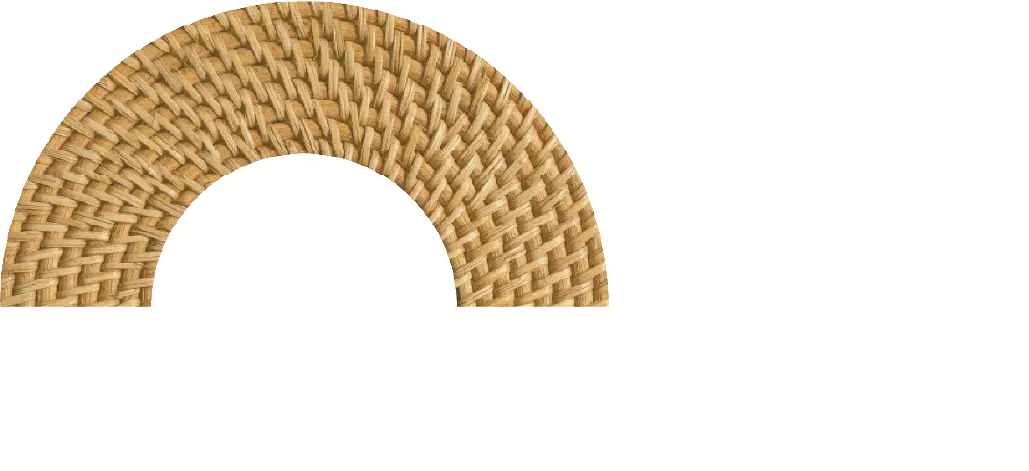
What’s in a name? For CIRI Shareholder Tanisha Gleason (Haida and Black), a lifelong Anchorage-area resident, names bring value, identity and a sense of place to her beloved city.
Last fall, Tanisha teamed up with three other women for the Anchorage District Naming Project, a partnership between the Alaska Humanities Forum (AHF) and Anchorage Economic Development Corporation (AEDC). The goal of the project was to create cohesion and celebrate community by creating Anchorage “districts” as part of a larger wayfinding effort.
“We always hear about the bad stuff in Anchorage—the high cost of living, outward migration, crime and homelessness,” Tanisha said. “What about the good stuff? I want to talk about why people live here and what makes them stay. Folks who’ve lived 30, 40 years or more in the same neighborhood have such passion and pride in their community. That deserves to be celebrated.”
Tanisha was gifted CIRI shares by her mother, the late Valerie G. Corey. Her mother’s family hails from Southeast Alaska; her father is African American. Tanisha is also a shareholder of Sealaska Corporation and an enrolled member of the Tlingit and Haida Indian Tribes of Alaska. She began working at CIRI in 2014, with stints in the Land and Resources and Shareholder Relations departments before being recently promoted to the position of administrative manager, CIRI Corporate Affairs.
The Raven’s Circle sat down with Tanisha to discuss the district naming project, her passion for Anchorage and her commitment to weaving Indigenous culture into the fabric of the city.
Background: I had been working with AHF on creating safe spaces to talk about how being Black shapes our relationship with the land. Because of my work with AHF, I was nominated to Leadership Anchorage, a nine-month leadership-development program for Alaskans seeking to make a positive impact in the community. Basically, AHF goes out into the community on behalf of its participants and says, “We have a bunch of people who want to work on a community-based project during this nine-month period, what’ve you got?” AEDC responded and said, “We are trying to name the districts within Anchorage. We are trying to make the districts more appealing to bring more people here and boost the economy by highlighting the good things about living in our city.” And I was like, yes, I’m sold. I can totally do that.
Beginnings: The four of us working on the project came from a range of experiences and backgrounds—private sector, self-employed, higher education. I was the only Alaska Native person. Ultimately, we decided on six focus districts—Coastal District, Downtown, Midtown, Muldoon, Spenard and U-MED—and seven additional areas: Dimond, Eagle River, Girdwood, Government Hill, Mountain District, Mountain View and Roger’s Park. Our project became the Anchorage District Naming Project.
We worked with AEDC for nine months, October 2023 to May 2024. We went to different community councils to gather feedback and get their buy-in. We basically said, “I want to talk about the good things. What makes your community special?” We were each assigned different districts; mine were Midtown, Muldoon and U-MED. Cumulatively, we spent about 310 hours on the project.
The final project includes all the information we gathered from the communities. The work was unpaid; the four of us were there because we felt passionately about the project.
On weaving in Alaska Native culture: One thing I contributed to this project was the inclusion of a proper Indigenous land acknowledgement. I also arranged for an Alaska Native artist, CIRI Shareholder Laura Lagstrom, to provide artwork for the presentation.
I took the project to the Native Village of Eklutna and met with Chief Aaron Leggett and asked, “Is there anything in here that’s giving you heartburn? No? Okay, good.” I wanted to tie to the Indigenous Place Naming Project that Chief Leggett and others are currently working on with the Anchorage Park Foundation. In the districts I was naming, I worked to identify different Indigenous features and landmarks because I wanted that tie-in.
With my history of working in the CIRI Land and Resources department, I understand that naming lands is an important tradition—an acknowledgement of identity and culture. I included as many Native-related places and landmarks as I could in my descriptions—the Alaska Native Heritage Center, Southcentral Foundation, CIRI and other Alaska Native corporations.
Presentation: We presented separately to AHF, the Anchorage Assembly and AEDC. What AEDC wanted was a proposal they could take to the Anchorage Assembly for a resolution. Once they reviewed it, they asked us to tighten it down to one district. The final proposal was just for Spenard.
But the seeds are absolutely planted for the other districts. We met with different heads of community, with the Cook Inlet Historical Society, with focus groups—all the different players. We found out in May that the project had been incorporated into the efforts of the AEDC Quality of Place management team, which seeks to reverse outward migration trends.
Looking ahead: Like many U.S. cities, especially in the wake of the pandemic, Anchorage has some statistics that are not the best. But you know, there’s a lot we do right. I really want people who live here to stay, and the best way to do that is to highlight what we have to offer. It was very nice to be able to talk about the good things.
My family’s ancestral lands are in Southeast Alaska, but my immediate family has been in the Cook Inlet region a long time. My grandmother moved to Anchorage as a 20-year-old and worked at the old Alaska Native hospital for 30 years. My mother was born and raised here. I grew up in Chugiak just a mile away from my grandmother’s house, so you’re talking about a family who’s been in the area 70-plus years.
We’re all conditioned to stick to our little bubbles. And that’s why the Anchorage District Naming Project was so great—taking in different perspectives but doing so in a safe environment where people understand you’re coming from a place of wanting to learn. The feedback we’ve received has been overwhelmingly positive. Next steps include further conversations with local community members and economic-development practitioners to inform the project plan and initiate development of the district-naming “roadmap.” I’m excited to see how the project evolves and its positive impact on our city.



